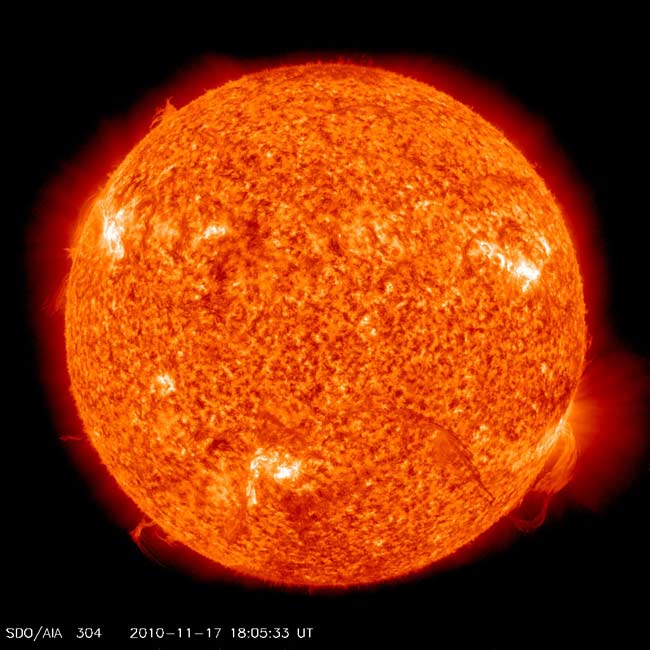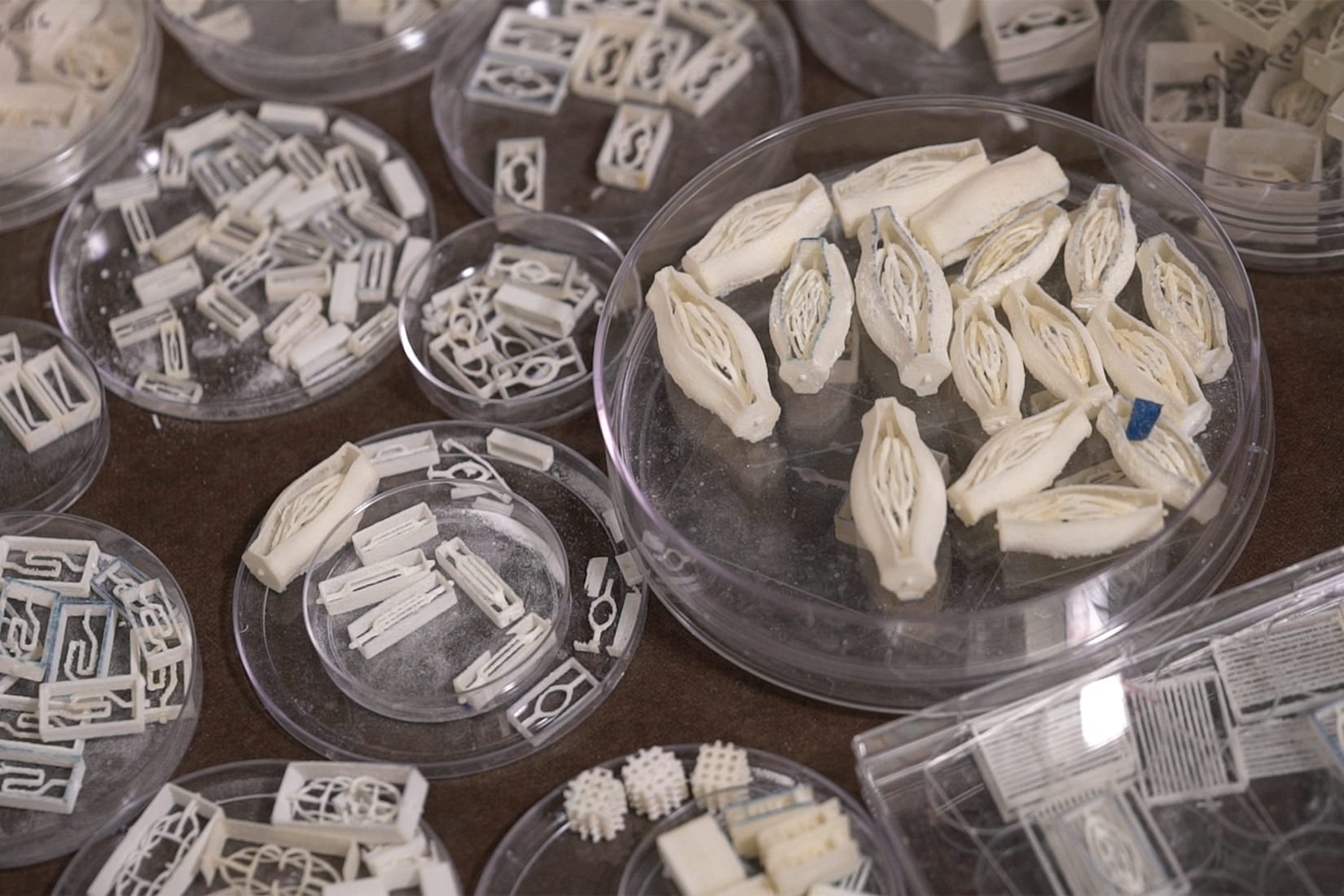
Lasers could heat materials to temperatures hotter than the centre of the Sun in only 20 quadrillionths of a second, according to new research.
Theoretical physicists from Imperial College London have devised an extremely rapid heating mechanism that they believe could heat certain materials to ten million degrees in much less than a million millionth of a second.
One of the problems with fusion research has been getting the energy from the laser in the right place at the right time. This method puts energy straight into the ions.– Dr Arthur Turrell
The method, proposed here for the first time, could be relevant to new avenues of research in thermonuclear fusion energy, where scientists are seeking to replicate the Sun’s ability to produce clean energy.
The heating would be about 100 times faster than rates currently seen in fusion experiments using the world’s most energetic laser system at the Lawrence Livermore National Laboratory in California. The race is now on for fellow scientists to put the team’s method into practice.
DIRECTING ENERGY
Researchers have been using high-power lasers to heat material as part of the effort to create fusion energy for many years. In this new study, the physicists at Imperial were looking for ways to directly heat up ions – particles which make up the bulk of matter.
When lasers are used to heat most materials, the energy from the laser first heats up the electrons in the target. These in turn heat up the ions, making the process slower than targeting the ions directly.
The Imperial team discovered that when a high-intensity laser is fired at a certain type of material, it will create an electrostatic shockwave that can heat ions directly. Their discovery is published today in the journal Nature Communications.
“It’s a completely unexpected result. One of the problems with fusion research has been getting the energy from the laser in the right place at the right time. This method puts energy straight into the ions,” said the paper’s lead author, Dr Arthur Turrell.
FAST FRICTION
Normally, laser-induced electrostatic shockwaves push ions ahead of them, causing them to accelerate away from the shockwave but not heat up. However, using sophisticated supercomputer modelling, the team discovered that if a material contains special combinations of ions, they will be accelerated by the shockwave at different speeds.
This causes friction, which in turn causes them to rapidly heat. They found that the effect would be strongest in solids with two ion types, such as plastics.
“The two types of ions act like matches and a box; you need both,” explained study co-author Dr Mark Sherlock from the Department of Physics at Imperial. “A bunch of matches will never light on their own – you need the friction caused by striking them against the box.”
“That the actual material used as a target mattered so much was a surprise in itself,” added study co-author Professor Steven Rose. “In materials with only one ion type, the effect completely disappears.”
Read more: Lasers could rapidly make materials hotter than the Sun
The Latest on: High-intensity laser
[google_news title=”” keyword=”High-intensity laser” num_posts=”10″ blurb_length=”0″ show_thumb=”left”]
via Google News
The Latest on: High-intensity laser
- Laser on NASA's Psyche asteroid probe beams data from 140 million miles awayon April 26, 2024 at 10:00 am
Basically, they launched a spacecraft toward an asteroid that could very well be made entirely of metal, a composition that appears to be a rarity — at least, in our solar system's vicinity. The ...
- China Claims New Breakthrough in Laser Propulsion Could Lead to Ultrafast, Stealth Submarineson April 25, 2024 at 5:27 am
Chinese scientists claim a breakthrough in laser propulsion that could transform submarine technology and shift global naval power dynamics.
- Best IPL and laser hair removal machines to use at home in 2024, tested by expertson April 23, 2024 at 5:40 am
Unlike the beam of light used in IPL treatments, laser hair removal uses a high-intensity laser. Since the light produced by the 810nm laser diode in the CurrentBody Skin device is more direct and ...
- At-Home Laser Hair Removal Gets You Silky-Smooth Skin for Hundreds Less Than In-Salon Treatmentson April 23, 2024 at 5:03 am
At-home lasers are mostly light-based devices that use low levels of energy to reduce hair on various parts of the body, says Christian Karavolas, laser hair removal expert and founder of Romeo & ...
- 4 of the Best Home Laser Hair Removal Devices by Hair Color, Coarseness, and Moreon April 17, 2024 at 5:00 pm
Laser hair removal works via IPLs or high-heat lasers ... the product should come with a guideline on what intensity levels to use for your hair color and skin tone. Some at-home laser hair ...
- Oklahoma Science Museum to close planetarium temporarily ahead of the new openingon April 17, 2024 at 1:16 pm
The Science Museum Oklahoma announced it will temporarily close ahead of the new Love's Planetarium opening. The museum will close after the last shows on April ...
- Attosecond imaging made possible by short and powerful laser pulseson April 15, 2024 at 5:00 pm
Creating laser pulses that are both ultrashort and have high energies would greatly expand ... amplification method that can increase the intensity of single-cycle laser pulses to terawatt-class ...
- Attosecond imaging made possible by short and powerful laser pulseson April 15, 2024 at 5:00 pm
A pair of nonlinear crystals is all it takes to create ultrashort laser pulses that are 50 times more energetic than any other laser pulses, finally shining light on how ultrafast electron reactions ...
- Get relief from your chronic pain with Midwest Pain Solutionson April 15, 2024 at 9:20 am
If you suffer from chronic pain, you are not alone. More than 50 million people deal with this daily. In this segment, Dr. Jackson Draeger from Midwest Pain Solutions discusses how a ...
- Electro-optic 3D snapshot of a laser wakefield accelerated kilo-ampere electron bunchon April 9, 2024 at 3:30 pm
Invented by T. Tajima and J. Dawson, laser wakefield acceleration (LWFA) harnesses the power of high-intensity laser pulses to drive plasma waves with acceleration gradients orders of magnitude higher ...
via Bing News










